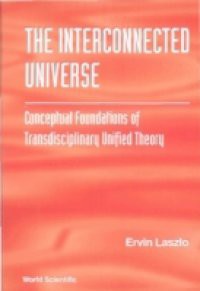This book offers an original hypothesis capable of unifying evolution in the physical universe with evolution in biology; herewith it lays the conceptual foundations of “transdisciplinary unified theory”. The rationale for the hypothesis is presented first; then the theoretical framework is outlined, and thereafter it is explored in regard to quantum physics, physical cosmology, micro– and macro–biology, and the cognitive sciences (neurophysiology, psychology, with attention to anomalous phenomena as well). The book closes with a variety of studies, both by the author and his collaborators, sketching out the implications of the hypothesis in regard to brain dynamics, cosmology, the concept of space, phenomena of creativity, and the prospects for the elaboration of a mature transdisciplinary unified theory. The Foreword is written by philosopher of science Arne Naess, and the Afterword is contributed by neuroscientist Karl Pribram.Contents:Theoretical Considerations:A Transdisciplinary Framework for EvolutionBasic Concepts of Quantum/Vacuum Interaction (QVI)Empirical Explorations:QVI in Microphysics and CosmologyQVI in BiologyQVI in the Cognitive SciencesSupplementary Studies:QVI Dynamics in the BrainPhilosophical Perspectives of QVI CosmologyNew Concepts of Space and TimeCreativity, Archetypes, and the Collective UnconsciousProblems and Prospects of Transdisciplinary Unified TheoryReadership: Interdisciplinary.Key Features:First major publication to include various aspects related to the engineering of complex chemical systems that are systematically treatedA broad survey of both experimental and theoretical studies

